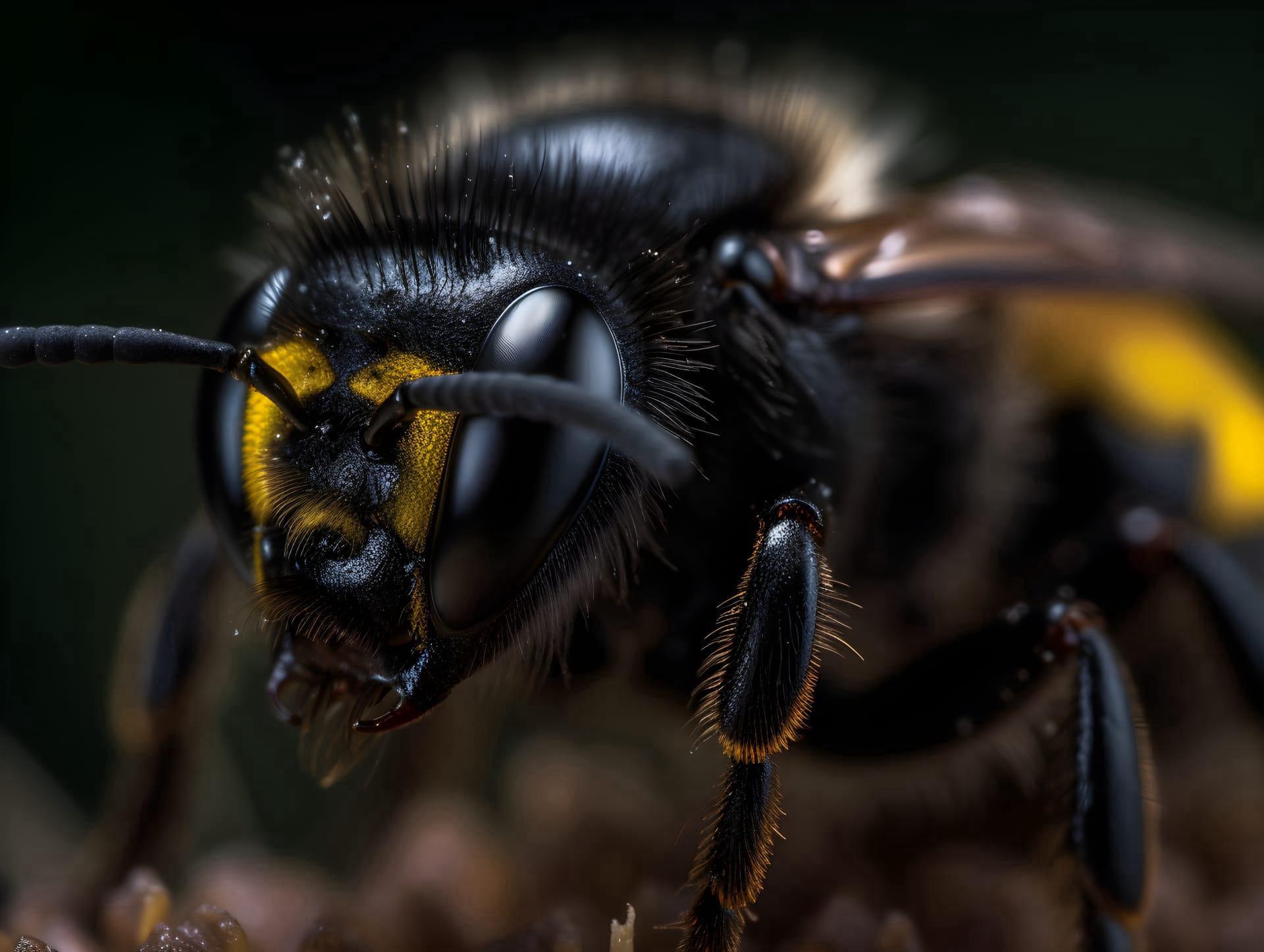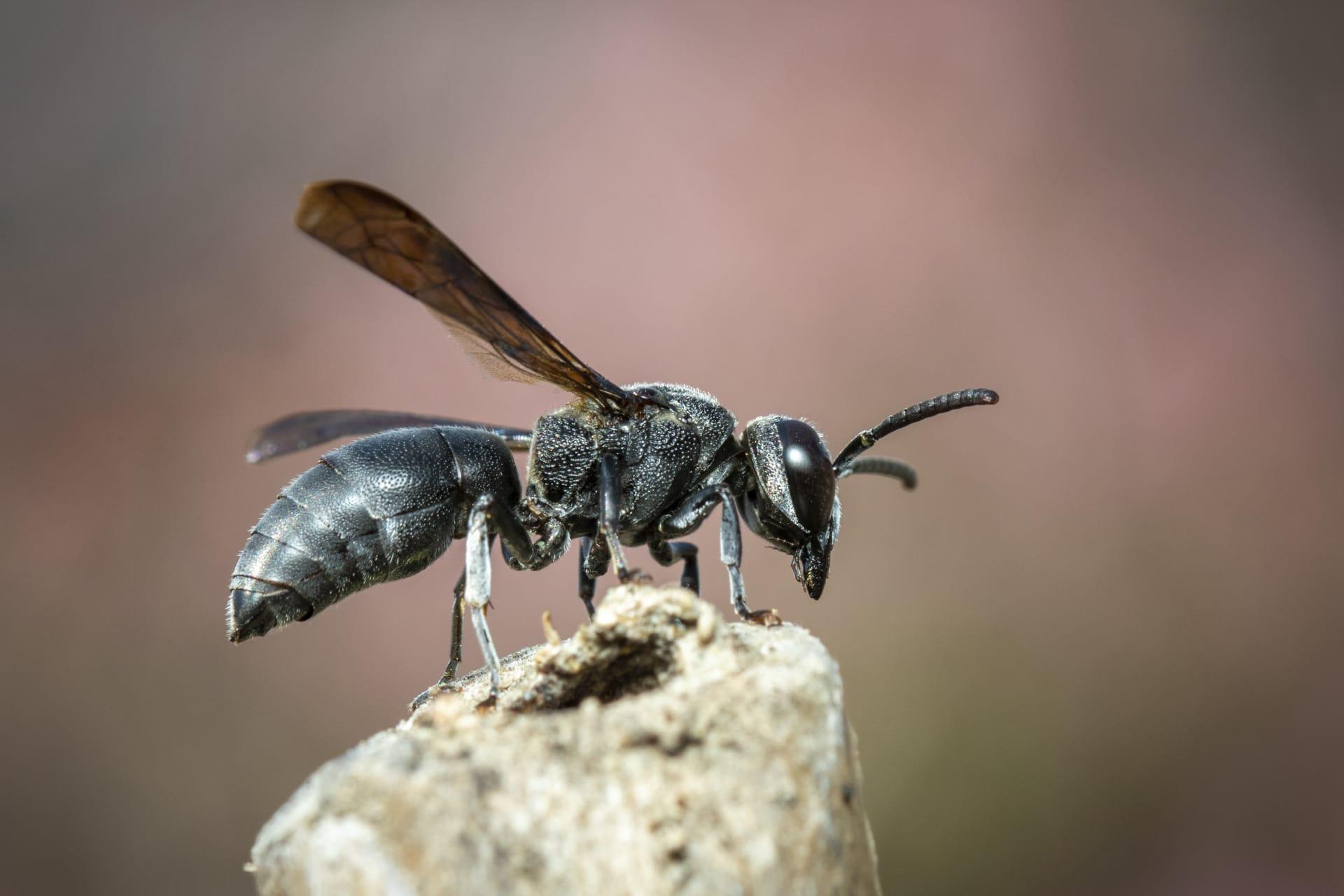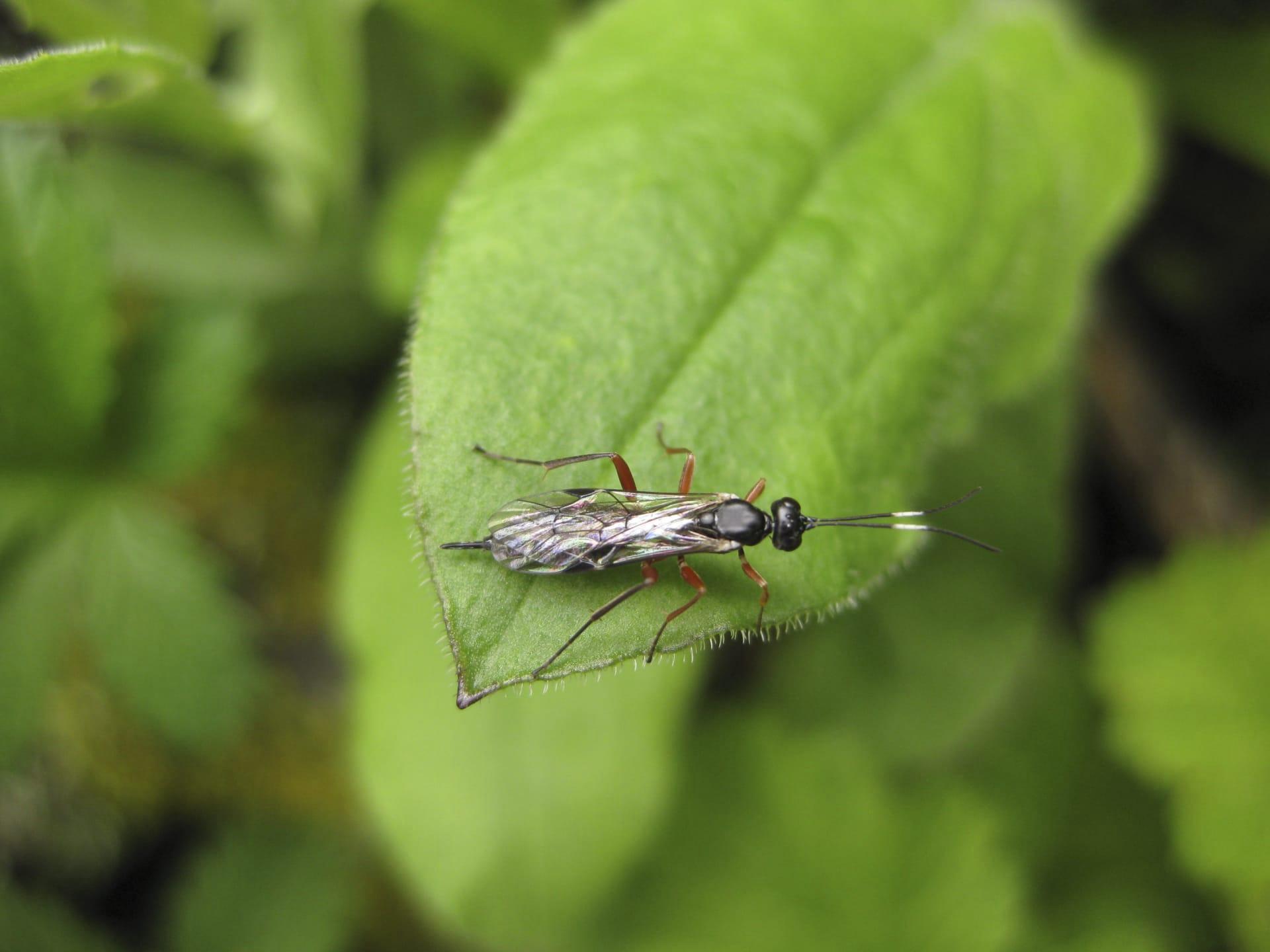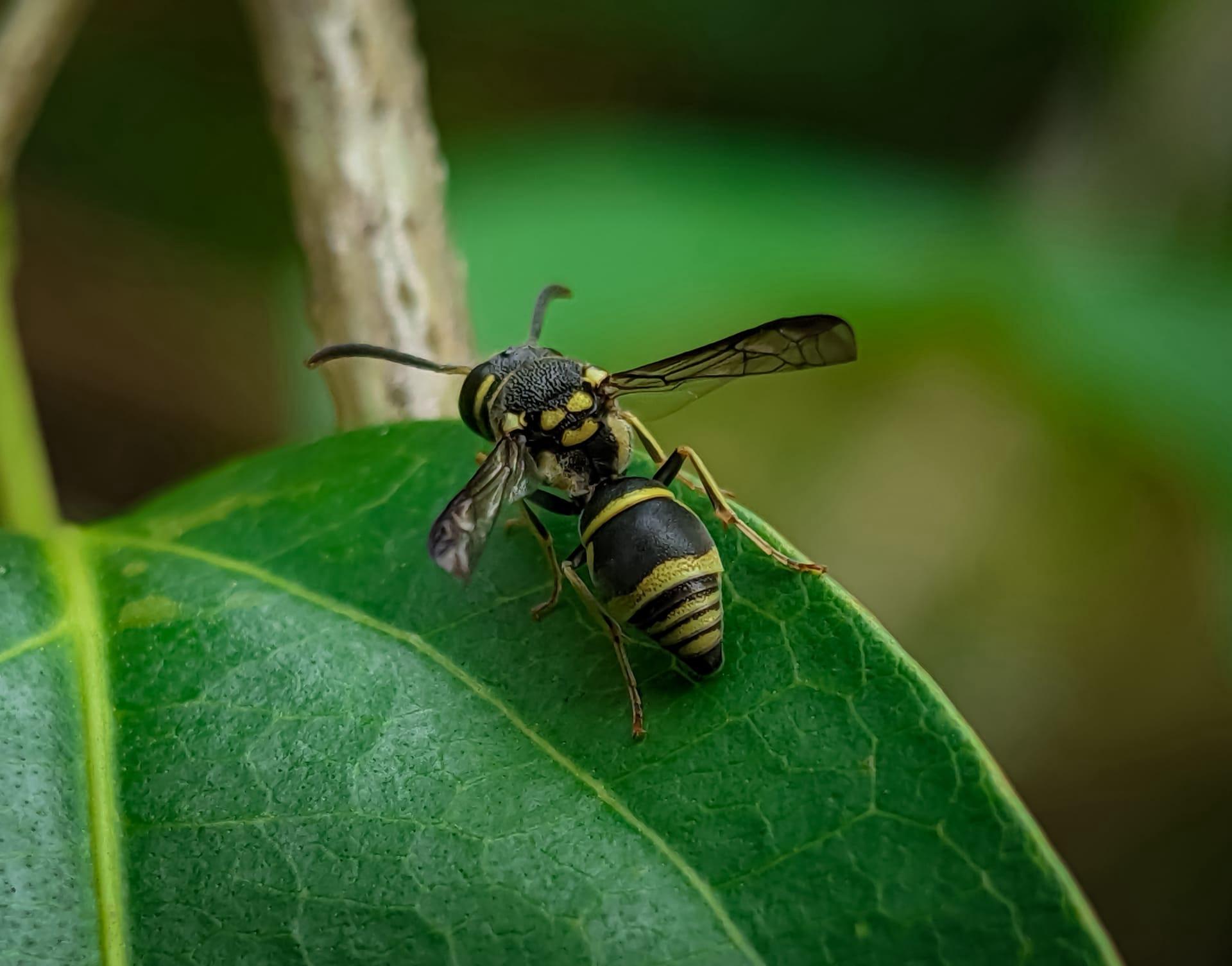1
Did you know that the black wasp, scientifically known as Sphex pensylvanicus, is an expert flyer? These remarkable insects can fly at speeds up to 7 miles per hour. That's pretty fast for their size, considering they're only about 1 to 1.5 inches long! Their wings, which span about 1.25 to 1.75 inches, aren't just for speed; they're also incredibly agile. This agility helps them hunt and capture their prey with impressive precision.
Another fascinating fact about black wasps is their method of feeding their young. They're like the ultimate hunters, preying mainly on grasshoppers, crickets, and other large insects. What's incredible is how they prepare meals for their larvae. After capturing a prey, the black wasp paralyzes it with a sting and then drags it back to its nest. But instead of eating it, the wasp lays an egg on the unfortunate insect. When the egg hatches, the larva has a fresh, still-living meal waiting for it!

2
Black wasps have a unique way of building their homes. Unlike bees that live in colonies, black wasps are solitary creatures. Each female wasp constructs her own burrow in the ground, which can be up to 10 inches deep! These burrows are not just holes in the dirt; they are carefully crafted with multiple chambers, each housing a single larva with its paralyzed prey. This architectural skill showcases their instinctual understanding of space and structure, ensuring the safety and development of their offspring.
Speaking of offspring, black wasps have a fascinating lifecycle. The female wasp lays her eggs in the late summer, and the larvae develop over the winter, feeding on the prey their mother provided. Come spring, they emerge as fully grown adults, ready to start the cycle anew. This seasonal lifecycle aligns perfectly with the availability of their prey and the optimal conditions for their young to grow, demonstrating a remarkable synchronization with nature.

3
Did you ever wonder about the coloration of black wasps? Their predominantly black bodies with sparse white markings are not just for show. This coloration plays a crucial role in their survival. The dark color helps in thermoregulation, absorbing heat from the sun, which is vital for these cold-blooded insects to maintain their body temperature. Moreover, their distinctive pattern makes them less attractive to predators, providing an added layer of protection in their natural habitat.
Black wasps also exhibit a unique behavior called 'dirt-dragging.' After laying an egg in a chamber within her burrow, the female wasp meticulously covers it with soil and debris. But she doesn't just push the dirt in; she performs a backward dragging motion with her hind legs, which ensures the chamber is securely sealed. This behavior not only protects the developing larva from predators but also from various environmental elements, showcasing the wasp's instinctive nurturing capabilities.

4
One of the lesser-known aspects of black wasps is their role in pollination. While they primarily hunt insects for their larvae, adult black wasps feed on nectar from flowers. In doing so, they inadvertently transfer pollen from one flower to another, contributing to the pollination process. This makes them a valuable part of the ecosystem, aiding in the reproduction of various plant species.
Another intriguing aspect is their navigation ability. Black wasps have an excellent sense of direction and can find their way back to their nests from considerable distances. They use landmarks and possibly the position of the sun to navigate. This incredible spatial awareness is vital for a species that hunts far and wide for food and then needs to return to a specific location to ensure the survival of its offspring.

5
Black wasps exhibit a behavior known as 'the wasp dance.' When a female wasp returns to her burrow with prey, she doesn't enter immediately. Instead, she performs a series of movements near the entrance, which include flying in a zigzag pattern and walking around the area. This behavior is thought to help her memorize the location of her burrow, ensuring she can find it again after her next hunting trip.
The sting of a black wasp is not just a defense mechanism; it's a precision tool. They use their sting to paralyze their prey precisely, aiming for specific nerve centers to immobilize but not kill it. This technique ensures that their prey remains fresh for their larvae. The sting of a black wasp is potent but is typically used only in defense or for hunting, not for aggression towards humans, making them less of a threat than often perceived.